Public libraries have always been places for learning and exploring, but they can also play a role in promoting outdoor activities and helping families spend more time outside. Libraries today can provide families with so much more than just books. Emily Liebel, Salt Lake City mom of three and book lover over at Inclusive Library, is here sharing 10 creative ways public libraries can help kids and families learn about their environment, appreciate local nature, and spend more time outside adventuring together! By promoting outdoor activities and environmental education, public libraries can play a vital role in fostering a love of nature and sustainability in the next generation.
How your public library can help you get outdoors
Public libraries are meant to be hubs for community and education. But, they can be underutilized in many ways beyond checking out interesting books. There are wonderful (and free!) resources curated by attentive librarians that we should be taking advantage of, many of which can actually be a springboard for helping kids and families spend more time outdoors.
Here is a list of 10 ways that libraries can help kids and families spend more time outdoors, each of which I’ll cover in more detail below:
- outdoor reading and storytimes
- park passes and library partnerships
- community exploration programs
- nature-themed book kits
- seed libraries and gardening programs
- story walks
- gear and equipment loans
- outdoor classes, workshops, and events
- books
- outdoor architecture of the library
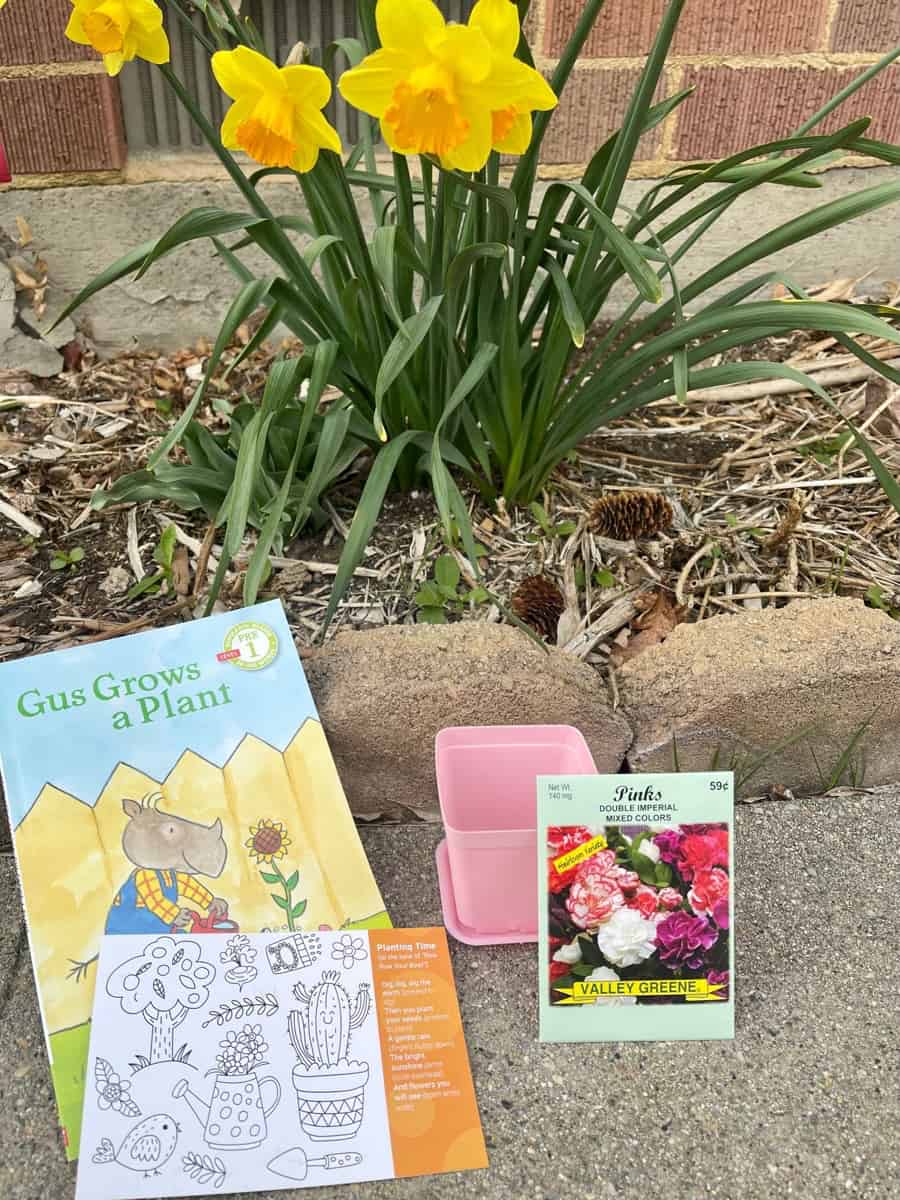
1. Outdoor reading programs and storytime
Public libraries can organize outdoor reading programs where children can enjoy books while being outdoors. The library can set up reading tents, chairs, and blankets in a park or a garden and encourage children to read books or listen to stories while being surrounded by nature.
Many libraries plan their story time events to be outdoors when the weather is warm enough. This is a great way to get a little extra time outside while also participating in other enriching programs. The downtown branch in SLC has amphitheater seating connected to the children’s section for this purpose. Some libraries provide blankets or mats for the children to sit on and brings out books and games for kids to read and play with outside.
2. Outdoor park passes and library partnerships
Some libraries partner with local parks and recreation departments, as well as outdoor educational places, to offer passes (or discounted admission) to nearby parks, zoos, conservation areas, botanical gardens, arboretums, wildlife centers, and nature preserves. This allows families to explore the natural beauty of their community and get immersed in nature.
These partnerships can also include joint programs, such as educational workshops, presentations, or storytimes hosted at these outdoor venues. By partnering with these organizations, libraries can offer unique learning experiences that allow children to engage with and learn about the natural world.
For example, while living in Georgia, I took my child to the Atlanta Zoo for free through our local public library. The Pines Library System has a DVD that you can check out and learn about the history and information on the Atlanta Zoo. When you return the DVD, the librarian prints a receipt that you take directly to the zoo to free admission for four. You can check out the DVD once a year.
The Georgia Public Library Service also provides state park passes to patrons. You can check these out the same way you’d borrow a book. You can also check out a discovery pack along with the pass. These packs have information about the 48 state parks that participate and a pair of binoculars.
Some libraries also offer national park passes that you can check out!
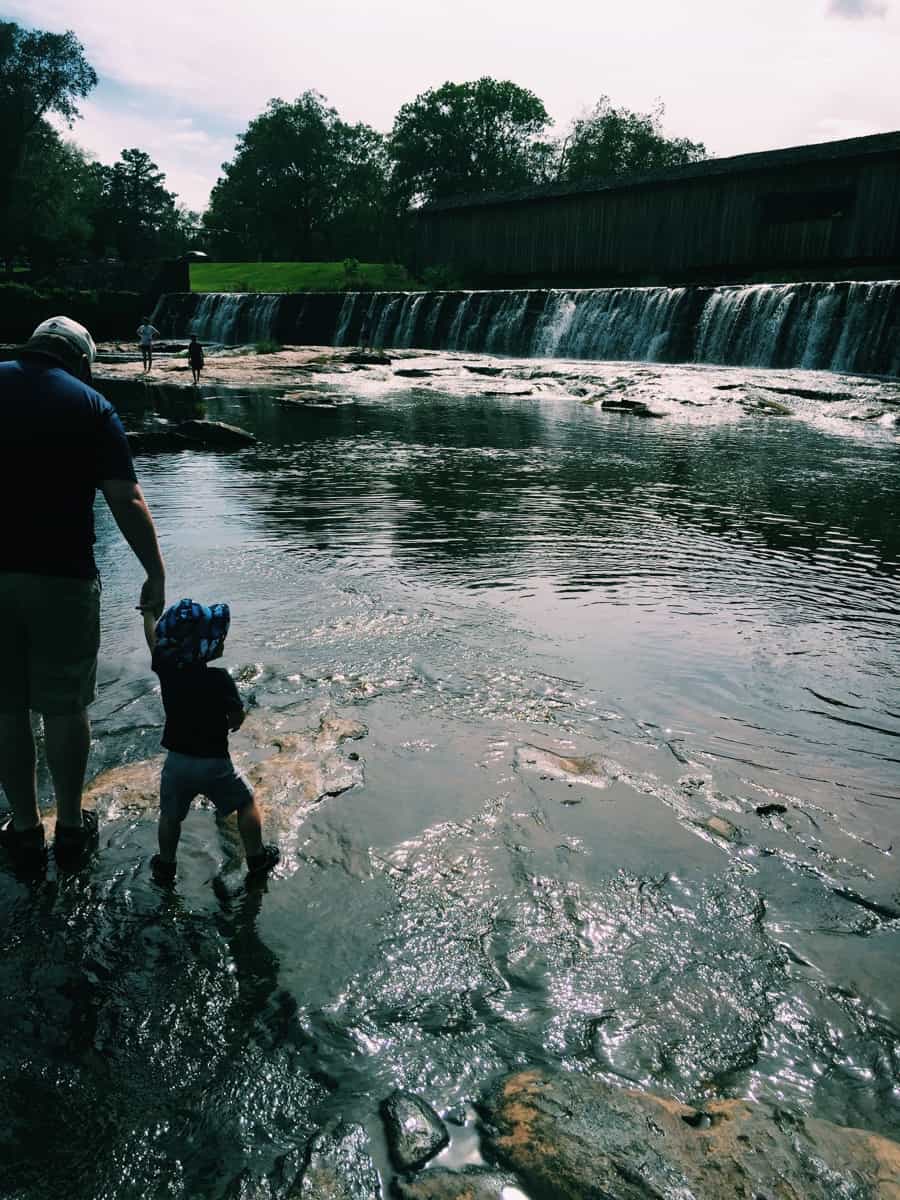
3. Community exploration programs
Public libraries can offer community exploration programs that encourage families to get out and explore their local area. These programs can take many forms, such as scavenger hunts, self-guided tours, or neighborhood walking groups. These activities can highlight interesting landmarks, historical sites and architecture, public art, or hidden gems in the area.
Community exploration programs not only encourage families to get outside and be physically active but also help them develop a deeper appreciation and understanding of their local area. By discovering new places and learning about the history and ecology of their community, families can feel more connected to their environment and to each other.
In Michigan, the Ann Arbor Public Library System hosts “The Summer Games“. Kids spend the summer earning badges and prizes by solving puzzles or riddles, looking for clues at each library location, and walking around their neighborhoods and the city at large looking for hidden QR codes at volunteer houses or businesses. Our first year participating was during 2020 lockdowns, and the library organized the games to be almost entirely outdoors while finding codes in windows or yards.
Now we live in Utah and the Salt Lake City Library (SLC) System offers a lottery system for Community Exploration Cards. Each month, a limited number of enrolled people are provided with free passes for four people to city centers like the Tracy Aviary, Red Butte Gardens, the Natural History Museum, and more. I enjoy taking my kids to Tracy Aviary because there are so many interesting and active birds, they do regular shows and classes, and there are fun playgrounds and sand pits.
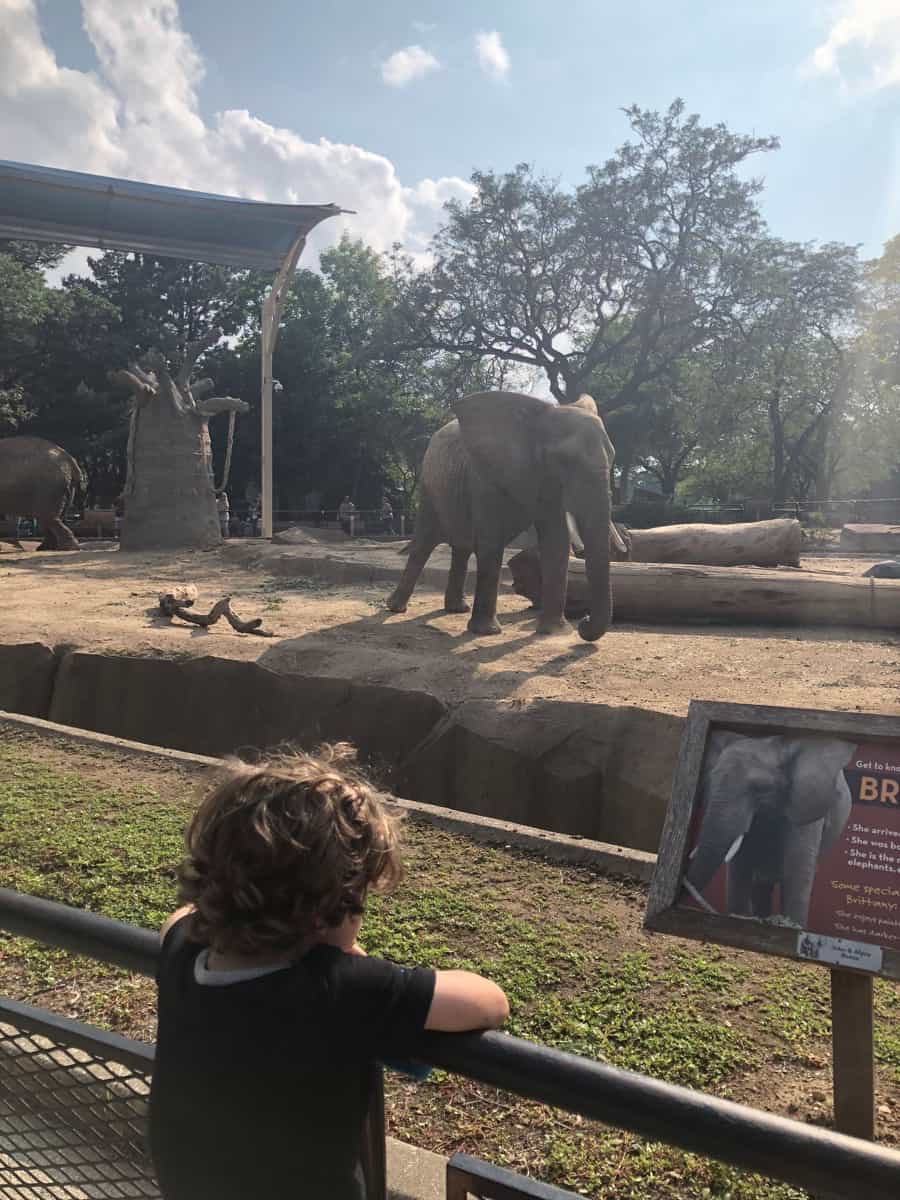 4. Nature-themed book kits
4. Nature-themed book kits
Every library I’ve visited has “book kits,” which are curated backpacks or tote bags full of books and supplies on a specific theme. You can find kits on animals, insects, instruments, food, the weather, languages, botany, geology, outdoor activities (e.g. camping, hiking, etc.), and so much more. They can also include field guides, outdoor activity books, and exploration tools such as magnifying glasses or binoculars. The kits are a great way to encourage kids to learn about the habitats and ecosystems of their local area, and develop a lifelong love of nature and environmental stewardship.
In addition to the books and tools included in the kit, libraries can also provide activity suggestions or challenges that encourage kids to get outside and put their newfound knowledge into practice. For example, we’ve participated in library challenges for kids where they’re expected to identify and photograph different birds or insects they find on a hike or to create a nature journal to document their outdoor adventures.
Our most recent kit had a gardening theme. In the SLC libraries, the kits include five books and a small selection of free-to-keep materials. The gardening kit ‘keep’ portion included a seed packet and a pot, a book, and some stickers. My kids check on their small wildflower pot daily. We read the books outdoors while planning where to plant all our seeds- which were also provided by the library!
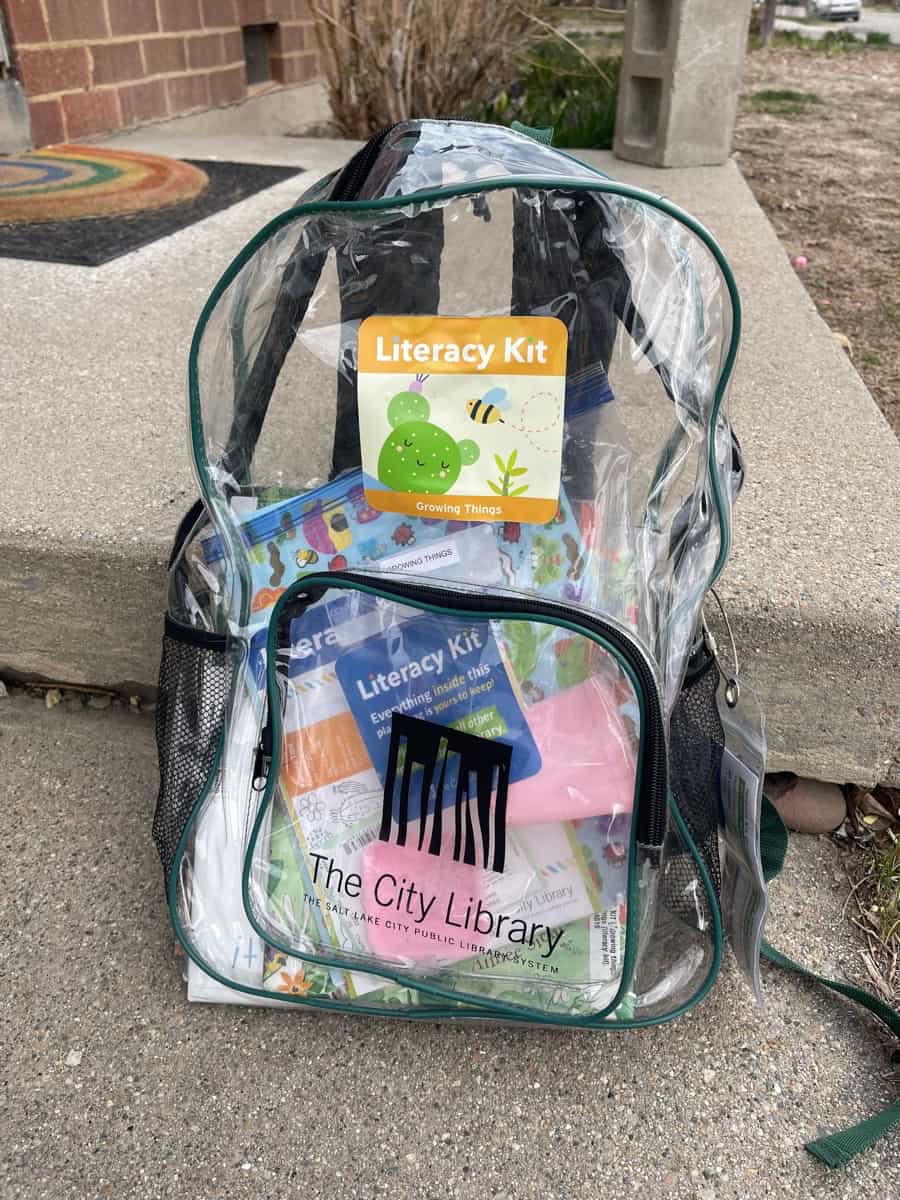
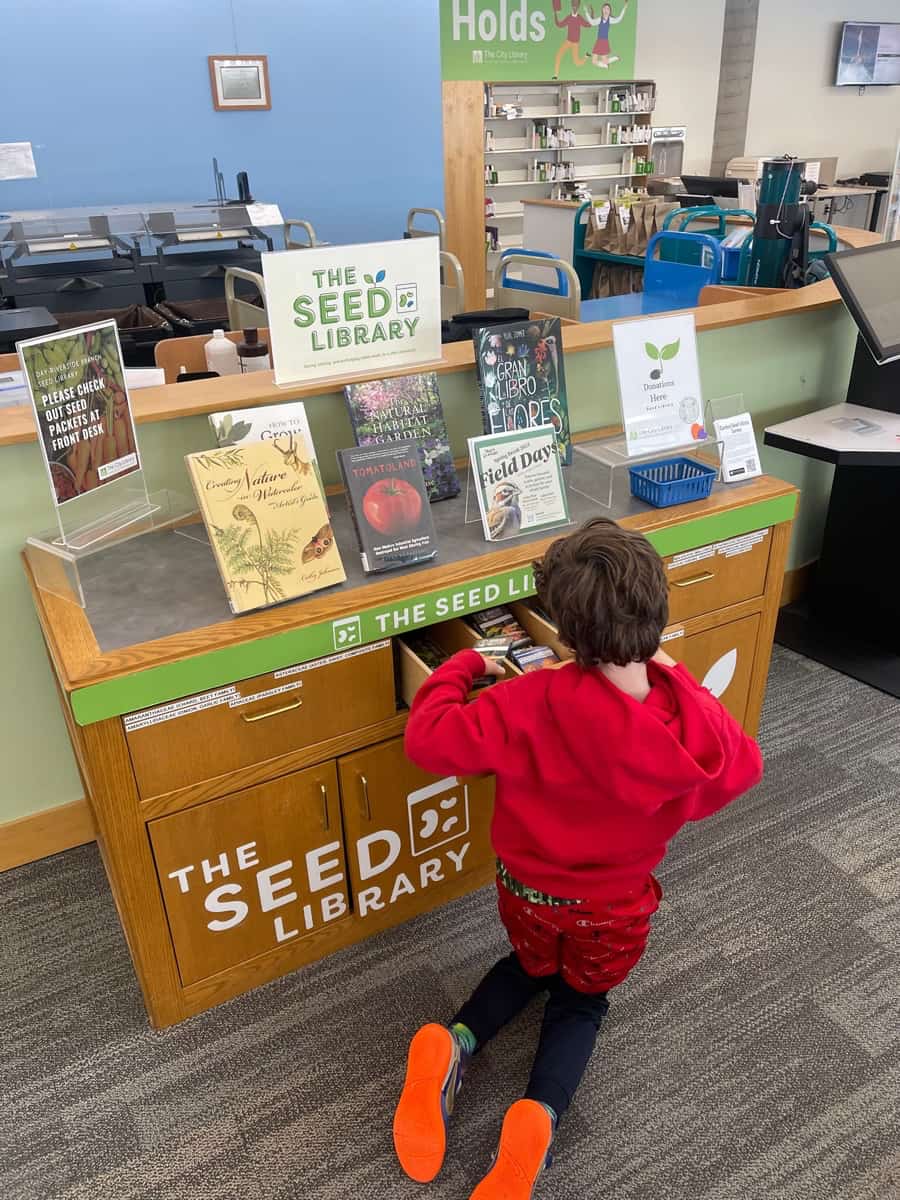
5. Seed libraries and gardening programs
Public libraries can use seed libraries and gardening programs to help get kids outside and engaged in nature. Seed libraries allow library patrons to borrow packets of seeds to plant in their own gardens or outdoor spaces. These seed libraries can include a variety of seeds, such as fruits, vegetables, flowers, and herbs, and can be used to encourage children and families to start their own gardens at home.
In addition to seed libraries, many public libraries offer gardening programs that provide educational opportunities for children to learn about gardening and environmental stewardship. These programs include information on starting a garden, caring for plants, and harvesting fruits and vegetables. They can also include activities such as creating a compost bin or building a birdhouse to attract local wildlife.
Through seed libraries and gardening programs, public libraries can inspire children to get outside and engage with nature. Children can learn about the natural world, the importance of sustainability, and the benefits of growing their own food. Gardening can also promote physical activity and healthy habits, as well as provide a sense of accomplishment and connection to the environment.
The seeds we will be planting in our home garden this year were all provided for free by our local public library. Many SLC and Salt Lake County branches have displays full of seed packets. You pick out the ones you want from an incredible selection, and a librarian will add them to your account. Once you plant your seeds, you take the leftovers back to be checked out by someone else. We will be spending many hours this spring outdoors planting and tending green beans, tomatoes, strawberries, and wildflowers that we found at our local branch.
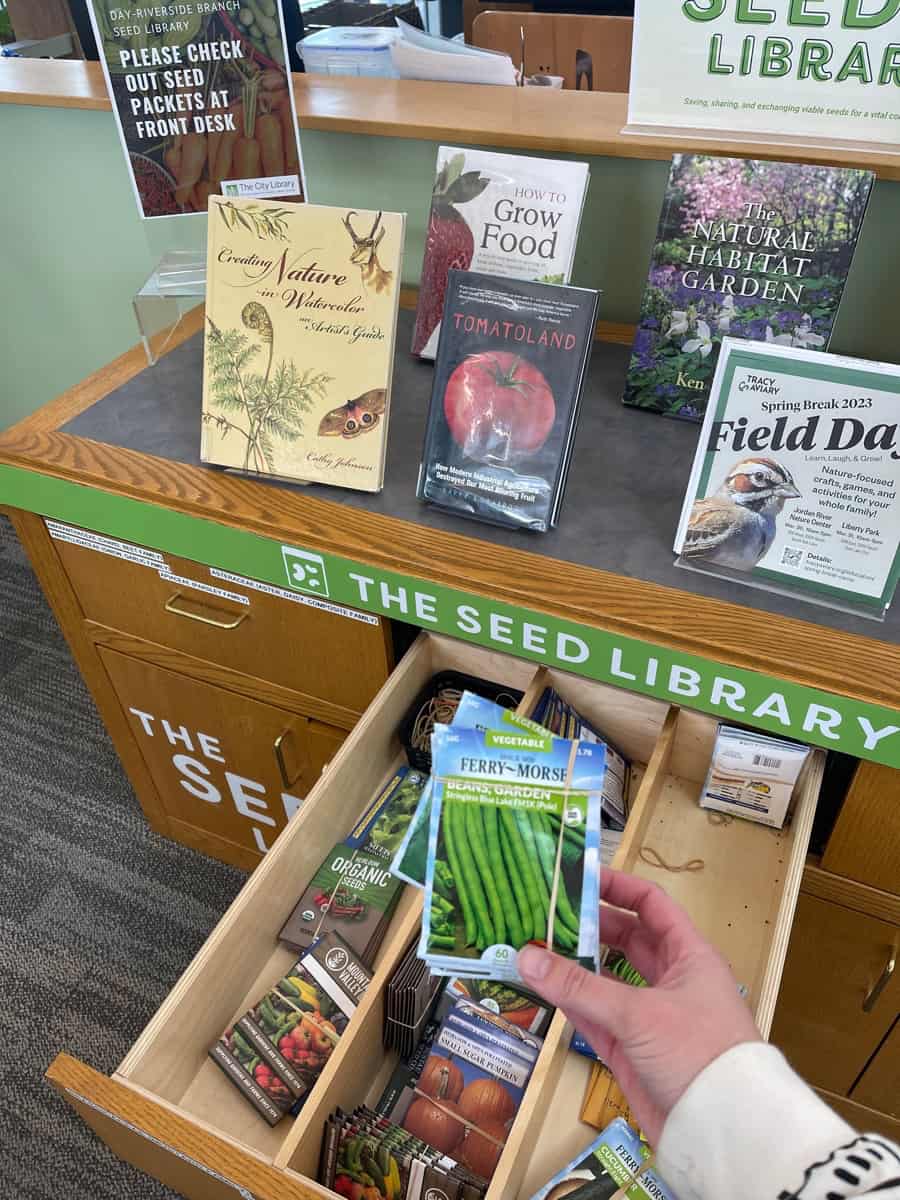
6. Story walks
A story walk is an outdoor literary experience where pages of a children’s book are posted along a walking path or trail. As children walk along the path, they read the story in order and engage in physical activity.
Story walks can be used to promote literacy, physical activity, and outdoor exploration. Often they’re hosted at local parks or nature reserves, allowing children to engage with nature while also enjoying a fun and educational experience. The stories selected for story walks can be just for fun, or themed around nature, ecology, or adventure, and can be curated to fit the interests and reading levels of different age groups.
Public libraries can partner with local parks and community organizations to organize story walks in their area. They can also provide additional resources and activities related to the story, such as craft activities or educational worksheets, to further engage children in the story and encourage them to learn more about the topic.
7. Gear and equipment loans
Depending on where you live, your local public library could offer a variety of outdoor equipment and gear that help and encourage families to get outside and explore the natural world.
The “library of things” movement has gained a lot of traction in libraries across the country. This movement refers to libraries loaning items well outside the traditional realm of books and audiovisual materials. Popular collections now include toys and games, camping equipment, and fishing gear. The gear is FREE to rent and use and can dramatically reduce the often-heavy and burdensome price point of entry for outdoor activities and hobbies.
Here are some examples of gear and equipment you could get from your local public library to help you spend more time outside:
- Outdoor games and sports equipment: Some public libraries offer equipment for outdoor sports and games such as frisbee, soccer, basketball, and tennis. We’ve heard of libraries that loan kayaks, stand-up paddleboards, and canoes!
- Camping gear: There are libraries that provide camping equipment such as tents, sleeping bags, and portable stoves to help families plan and enjoy outdoor camping trips.
- Biking gear: Libraries can provide bikes for families to borrow, as well as helmets, locks, and bike repair kits to ensure safety and convenience.
- Fishing equipment: Libraries can offer fishing rods, reels, and tackle boxes to encourage families to try their hand at fishing.
- Technology gear: Some public libraries also let you check out technological equipment such as microscopes, telescopes, GoPros, and binoculars.
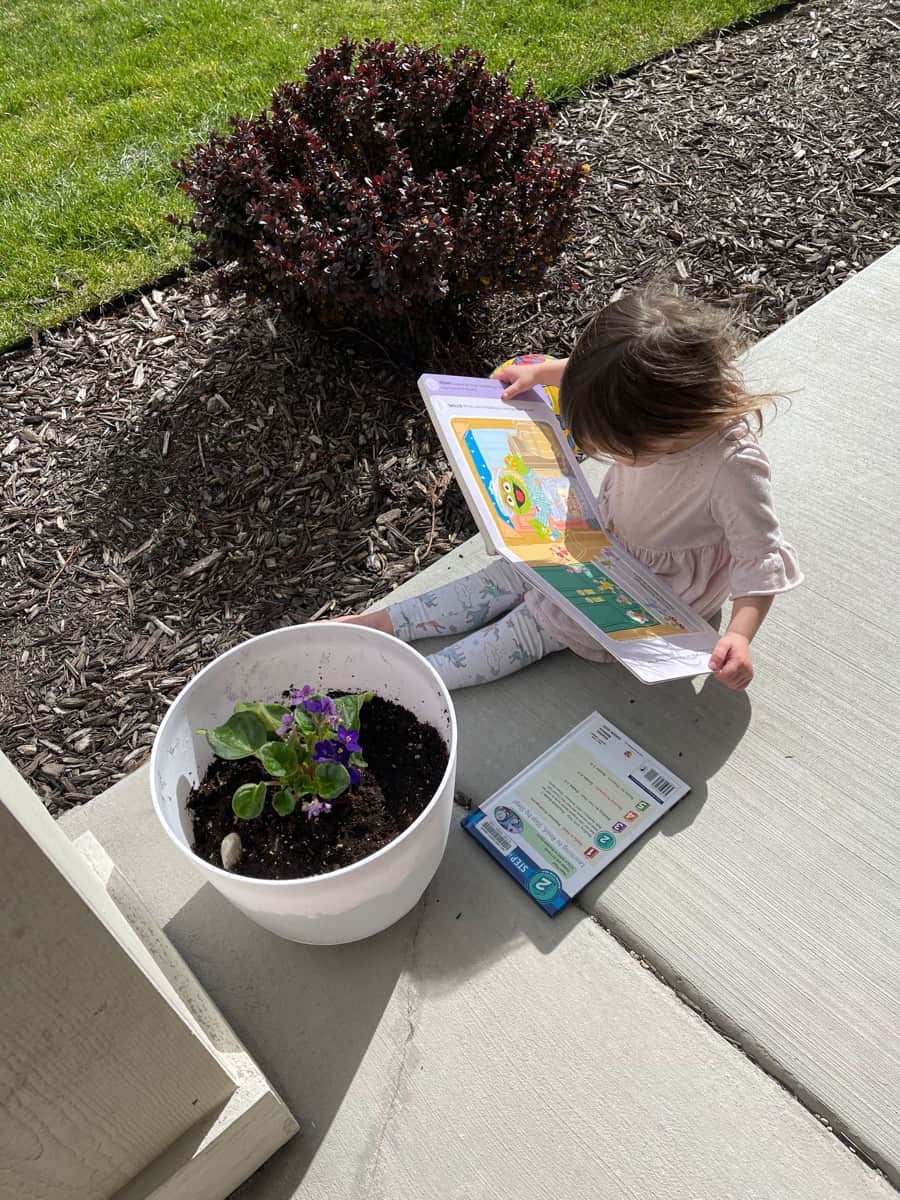
8. Outdoor classes, workshops, and events
Events such as classes, workshops or presentations where kids learn about nature are great ways that public libraries can help you get outside. If you check your local library website, you will find events listed that cater to different age groups. These can be recurring meeting or special events. Not every class will be geared towards the outdoors, but we can find many that do. Outdoor classes and events hosted by libraries in local parks or natural areas can provide a fun and interactive way for families to explore nature and learn about their community, while also engaging in a creative activity.
Our local library host outdoor crafting workshops where kids can make crafts using materials found in nature, such as leaves, flowers, and twigs, which can spark an interest in exploring the natural world and encourage kids to spend more time outside collecting materials for future crafts. Books, guides, and online resources can give kids ideas for outdoor crafts, such as making birdhouses, nature collages, or planters using recycled materials.
If you are looking for simpler materials that you bring along outside, ask your children’s librarian what they have available. Each week, our local public library will print coloring pages, bookmarks, and other crafting packets that you can pick up for free. These are great to color outdoors: in your backyard, on a picnic, or take on your hike.
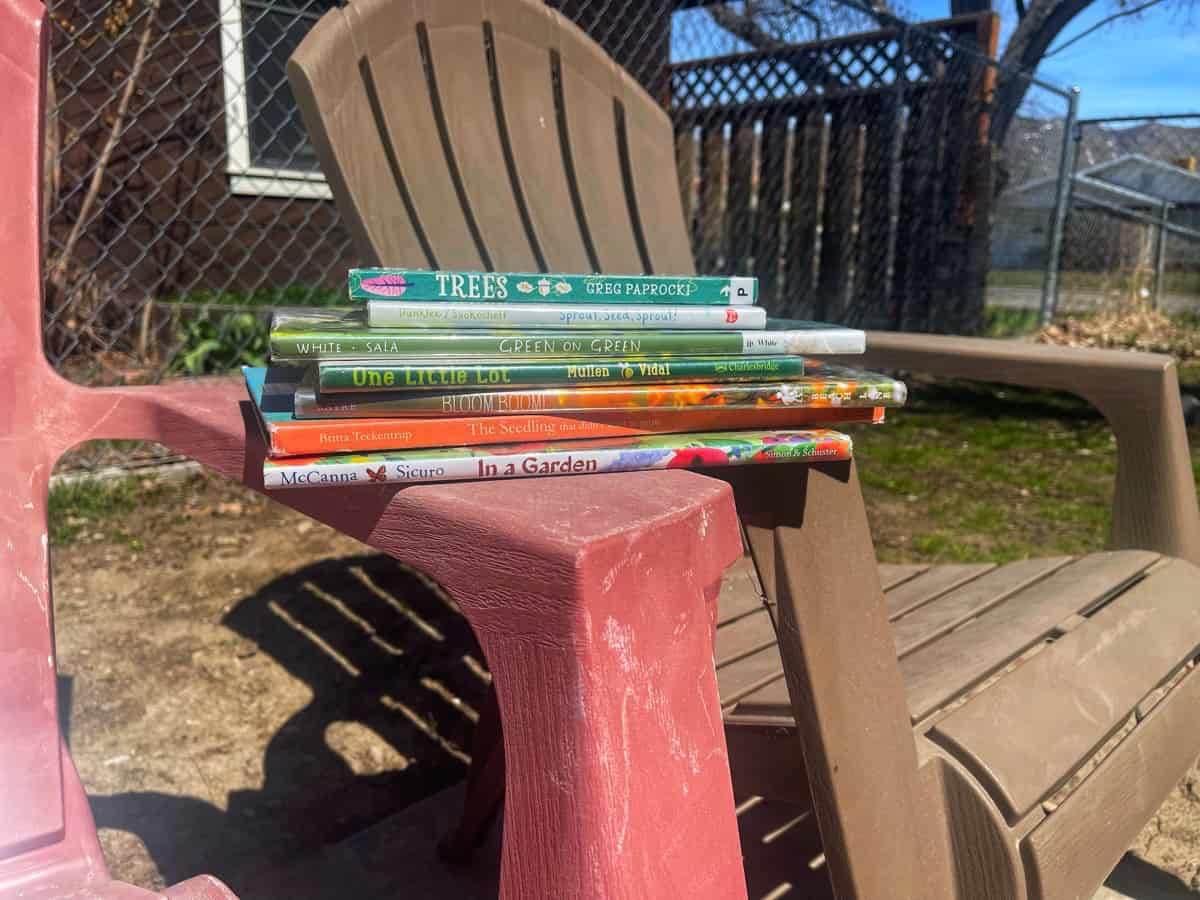
9. Books
Of course, there are always books to check out! Any book you and your children find interesting from the library can be packed along and taken with you on your outdoor adventures. Take a book to a park or read on your patio furniture for a relaxing moment outdoors.
You can also check out books that are specifically about nature, wildlife, the environment, and the outdoors. These are great options to learn more about an activity you’re about to do or to enjoy fun stories about spending time outside.
Check out books about a state park you will soon visit to learn about the best trails and the history. Check out a book with information about insects that you can then find in your own yard. Whether you browse for these books yourself or ask your librarian for recommendations, there are books that cover many interesting topics. Additionally, many library systems can borrow books from other locations if your specific branch doesn’t carry what you’re looking for.
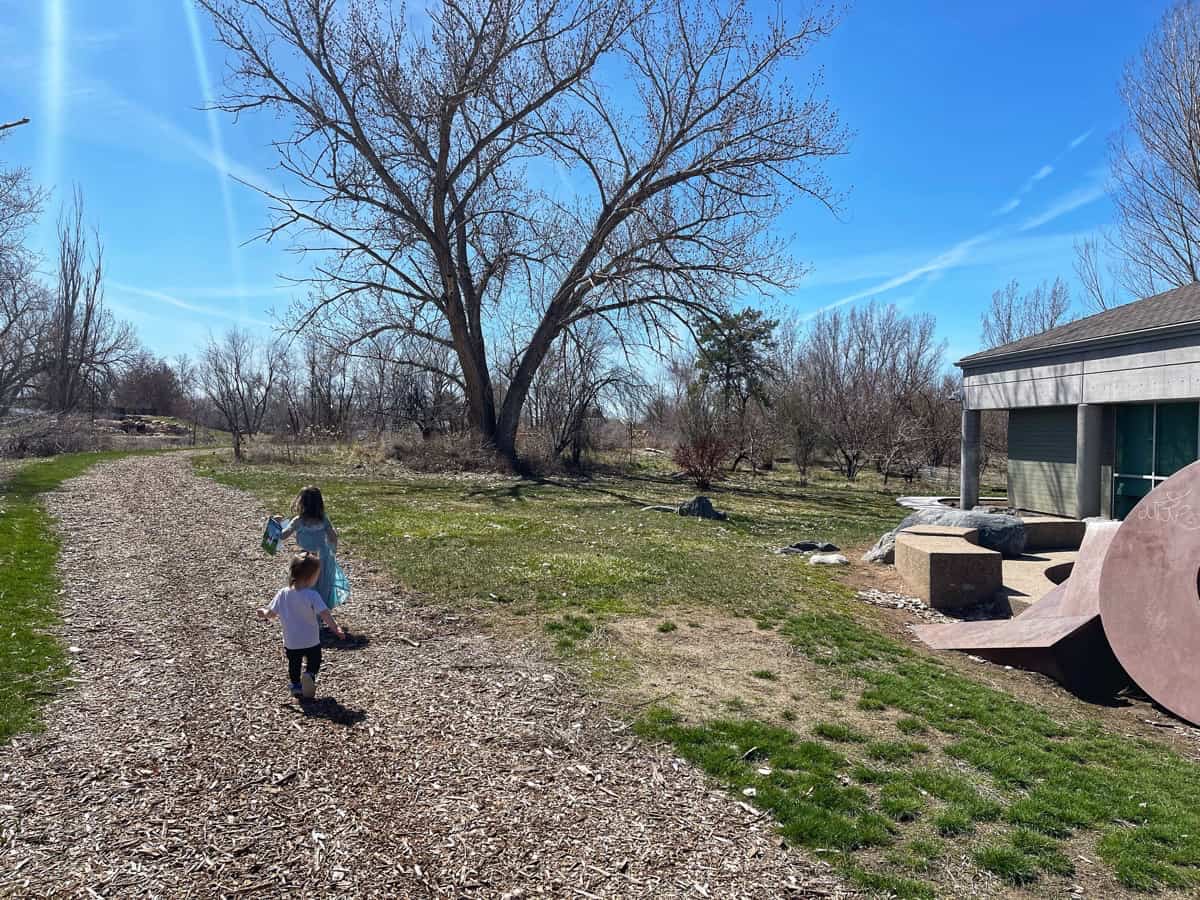
10. The outdoor architecture of the library
I love visiting every library branch when I move somewhere new. I have even been known to seek out the local branch of places I visit on vacation. This is because each and every building is unique to simply physically visit. As I said in the beginning, libraries are meant to be hubs for the community. Their spaces must then be inviting and useful to the community they serve. I have found libraries in which I would love to spend hours meeting with others from my community.
Some branches I’ve visited, such as the Glendale and Marmalade branches in SLC and the Oconee branch in Georgia, have courtyards where kids can enjoy their newly checked-out books or eat their snacks in the sun. In some of these courtyards, librarians provide chalk or bubbles that the kids can use while out in the space.
In Milwaukee, Wisconsin, the Tippecanoe branch has a spectacular outdoor space complete with a “Secret Garden” inspired garden and bioswales. This library has also taken steps to combat some of its carbon footprint. They use solar panels and have a permeable parking lot to reduce stormwater runoff. Visiting a library such as this one is a great way to supplement our kids’ education on caring for our planet.
The downtown branch in SLC is an impressive building with a rooftop terrace. There are trees, grass, and multiple seating areas for all patrons. The terrace has 360-degree views of the valley and the Wasatch Mountains. It is always engaging to take kids up to point out different sights on the mountains or areas they might recognize.
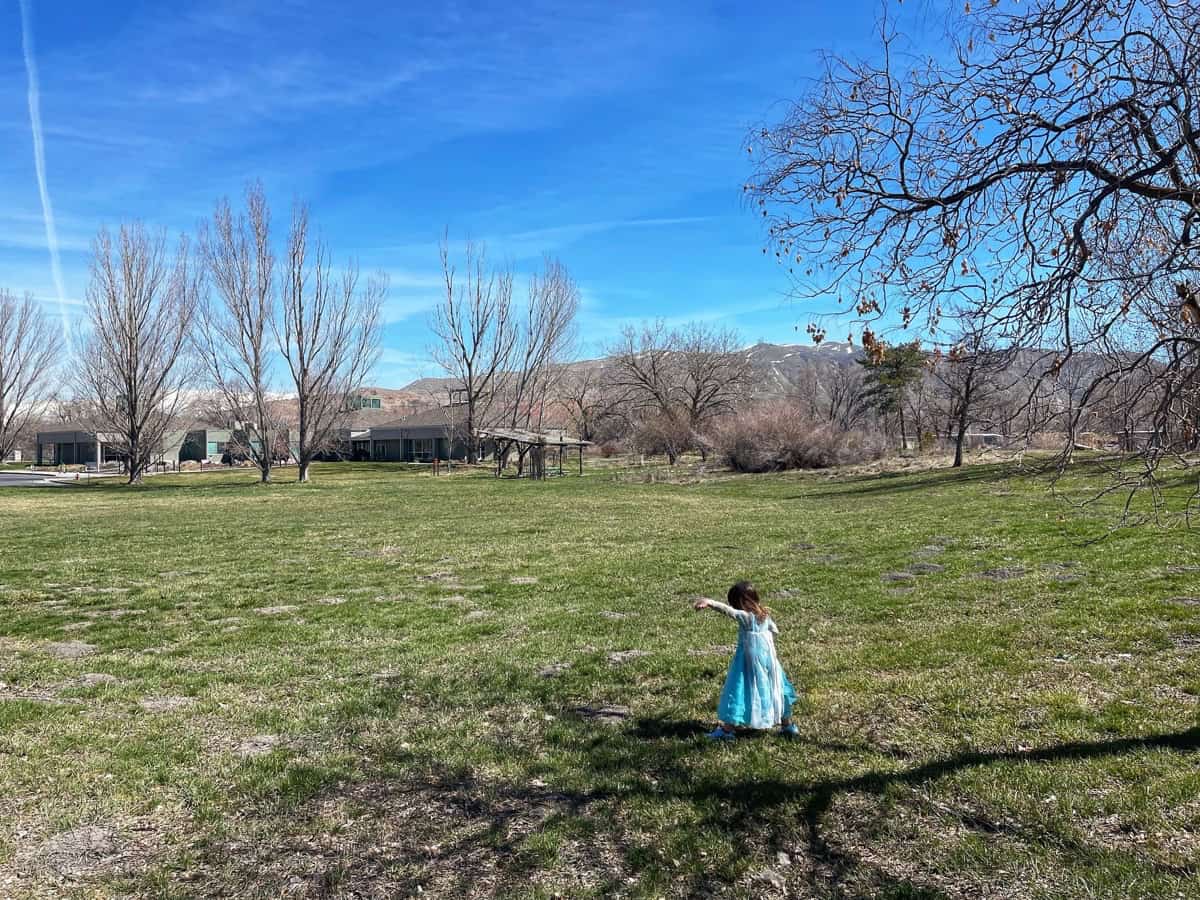
Ways your public library can help families get outside
When you are short on ideas, supplies, or money for new outdoor adventures, your library will help you out. I have lived in five different states, and the public libraries in each have helped me acclimate and learn about cool places in my new home area. Head to your local public library to ask about the unique outdoors benefits they provide- like the ones I mention here.
How does your local public library help you get outside?

About the author
Emily and her family have moved across the US multiple times, and the best things about each state have been the outdoor adventures and the public libraries! Now living in Utah, Emily has continued her love for both. She explores both mountain and city outdoor spaces weekly with her three kids and friends and attends library story times, as well as leads a local story time. Emily has a passion for children’s literature. She uses books to educate, promote inclusion, understanding, and justice, and inspire adventure and creativity. Emily loves how reading and being outdoors overlap in so many exciting ways!
You can find Emily online in the following locations:
Instagram: @inclusivelibrary
RWMC Posts: Emily Liebel

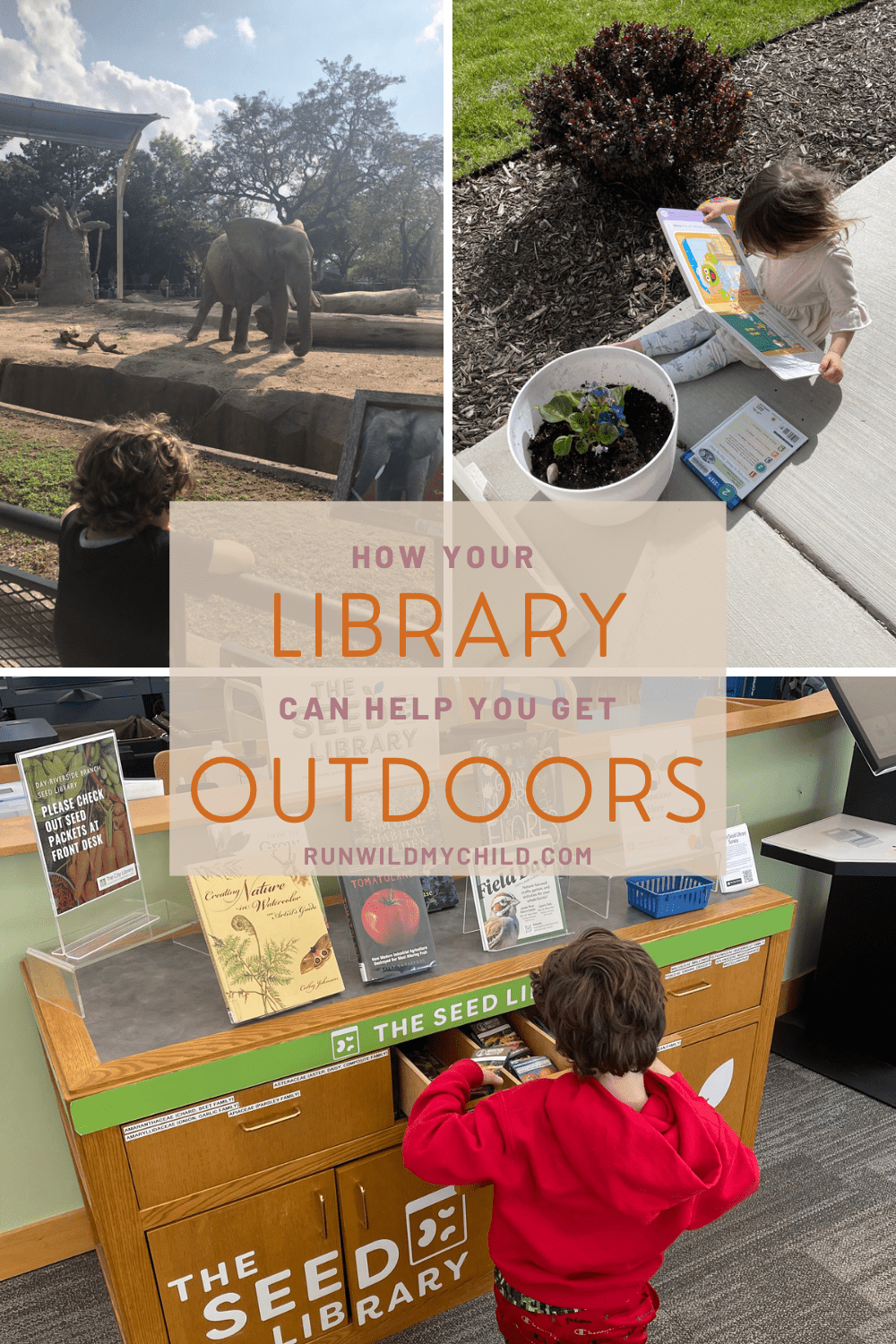







2 comments